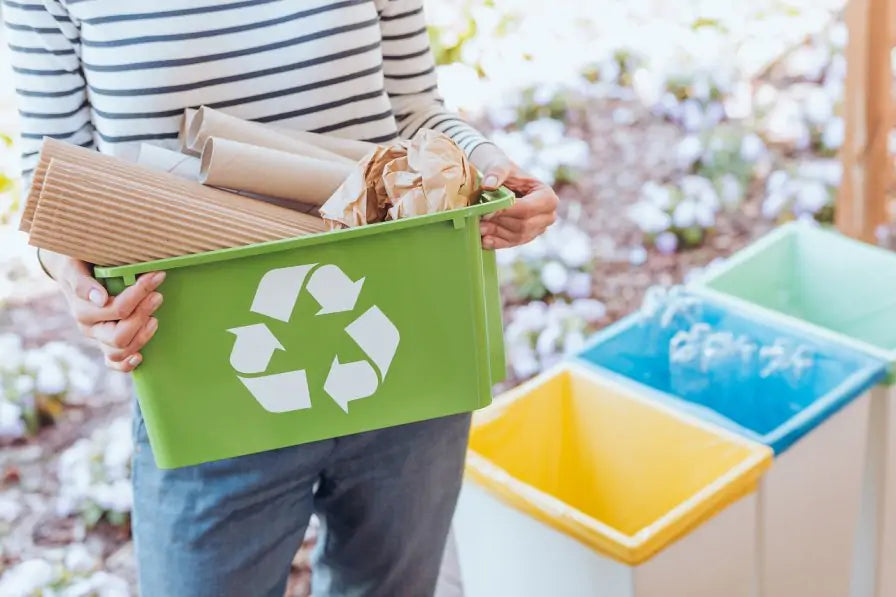Why not add these to compliment your wheelie bins?
Your basket is currently empty.
Shop NowWe guarantee to have the lowest price! Find the same bin for a cheaper price and we will beat it!

W is for Waste less
There’ll be more plastic in the sea by 2050. Litter has got worse since lockdown has eased. The UK is running out of landfill space. We’ve all seen headlines like this, and while they might be depressing, the less depressing news is that we can do something about it.
If we are going to protect the environment, wildlife, and our own health, we need to start thinking about reducing the amount of waste we produce and throw away. Here’s our easy guide to how you can waste less.
Make some sensible zero waste swaps in your home
If you want to waste less, it all starts at home.

In the bathroom
If you’re someone who likes their products, just look at how many plastic bottles you have in your bathroom. This adds up to a lot of potential plastic waste. Many people recycle their kitchen waste but forget about the things in their bathroom. Here’s how you can waste less.
In the kitchen
In the home office
If you work from home, you need to think about how you can waste less.

In the wardrobe
The rise of fast fashion and online retailers selling cheap clothing is creating a lot of waste. Why would people bother to make do and mend when you can buy a replacement item for a dirt cheap price?
But when it comes to clothing, we really need to waste less. 10,000 items of clothing end up in landfill every 5 minutes-yes, you read that correctly. This means that valuable materials, water, energy, and other resources are going to waste. We need to put a stop to this throwaway culture by:
We hope that some of these tips help you to waste less, save money, and do your bit for the planet!
Due to the incoming simpler recycling legislation we are experiencing a huge increase in demand. All orders are being processed as fast as possible, but there is a delay of around 2-3 weeks at present. We will respond to all emails as soon as we can but please bear with us as we work through the backlog.